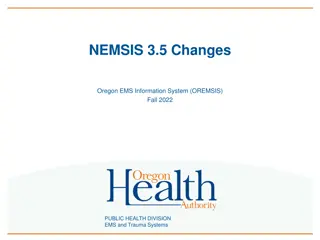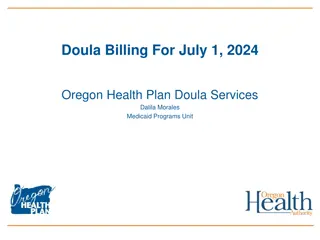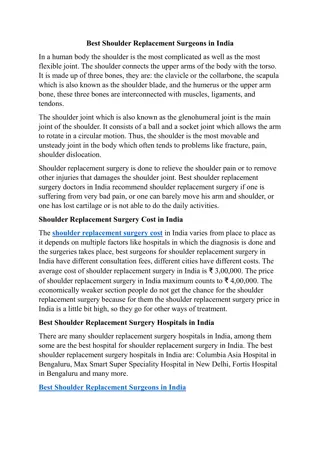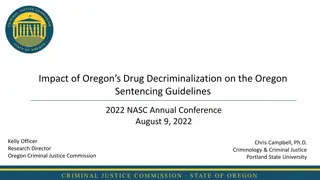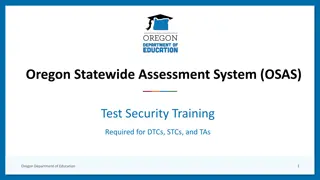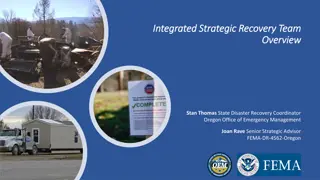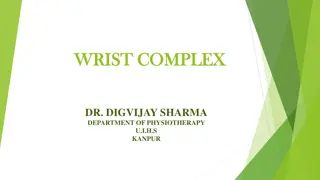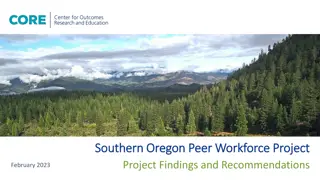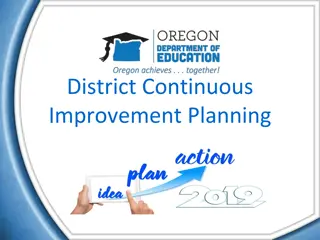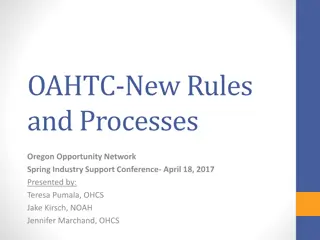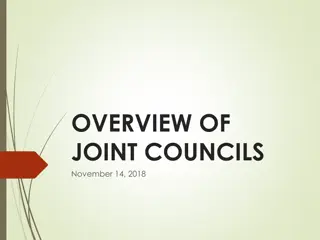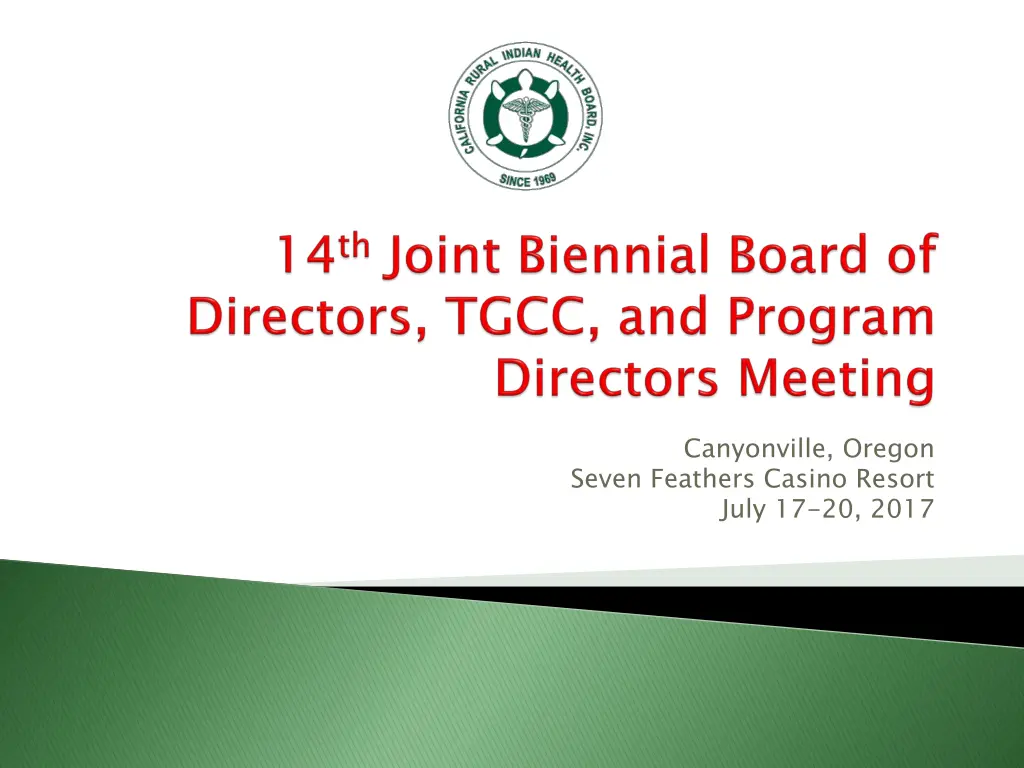
Emergency Preparedness Rule Overview
Learn about the CMS Emergency Preparedness Rule, its goals, conditions of participation, and provisions for all provider types. Discover how this rule enhances patient safety during emergencies and encourages coordination across healthcare providers. Stay informed and prepared for effective emergency response.
Download Presentation

Please find below an Image/Link to download the presentation.
The content on the website is provided AS IS for your information and personal use only. It may not be sold, licensed, or shared on other websites without obtaining consent from the author. If you encounter any issues during the download, it is possible that the publisher has removed the file from their server.
You are allowed to download the files provided on this website for personal or commercial use, subject to the condition that they are used lawfully. All files are the property of their respective owners.
The content on the website is provided AS IS for your information and personal use only. It may not be sold, licensed, or shared on other websites without obtaining consent from the author.
E N D
Presentation Transcript
Canyonville, Oregon Seven Feathers Casino Resort July 17-20, 2017
CMS Emergency Preparedness Rule CMS Emergency Preparedness Rule
Al Hernandez-Santana, JD, MCP Associate Health Policy Analyst Tel. (916) 929-9761, Ext.1003 Email to: asantana@crihb.org
Disclaimer This presentation was prepared as a service to the public and is not intended to grant rights or impose obligations. This presentation may contain references or links to statutes, regulations, or other policy materials. The information provided is only intended to be a general summary. It is not intended to take the place of either the written law or regulations. We encourage readers to review the specific statutes, regulations, and other interpretive materials for a full and accurate statement of their contents.
Adapted and presented by: Al Hernandez-Santana, JD, MCP Associate Health Policy Analyst Tel. (916) 929-9761, Ext. 1003. Email to ASantana@crihb.org
CMS Emergency Preparedness Rule First published in the Federal Register for comment on December 27, 2013. Increases patient safety during emergencies. Establishes consistent emergency preparedness requirements across provider and supplier types. Establishes a more coordinated response to natural and man-made disasters. Applies to 17 Medicare and Medicaid providers and suppliers. Final rule published in the Federal Register on September 16, 2016. Rule is effective as of November 15, 2016 Rule must be implemented November 15, 2017
Goals for the Rule Address systemic gaps Establish consistency Encourage coordination
Conditions of Participation Conditions of Participation (CoPs) and Conditions for Coverage (CfCs) are health and safety regulations which must be met by Medicare and Medicaid-participating providers and suppliers. They serve to protect all individuals receiving services from those organizations.
Four Provisions for All Provider Types Risk Assessment and Planning Policies and Procedures Emergency Preparedness Program Communication Plan Training and Testing
Who is Affected? Inpatient Outpatient Critical Access Hospitals (CAHs) Ambulatory Surgical Centers (ASCs) Clinics, Rehabilitation Agencies, and Public Health Agencies as Providers of Outpatient Physical Therapy and Speech-Language Pathology Services Hospices Hospitals Community Mental Health Centers (CMHCs) Intermediate Care Facilities for Individuals with Intellectual Disabilities (ICF/IID) Comprehensive Outpatient Rehabilitation Facilities (CORFs) Long Term Care (LTC) End-Stage Renal Disease (ESRD) Facilities Psychiatric Residential Treatment Facilities (PRTFs) Home Health Agencies (HHAs) Religious Nonmedical Health Care Institutions (RNHCIs) Hospices Transplant Centers Organ Procurement Organizations (OPOs) Programs of All Inclusive Care for the Elderly (PACE) Rural Health Clinics (RHCs) and Federally Qualified Health Centers (FQHCs)
Risk Assessment and Planning Develop an emergency plan based on a risk assessment. Perform risk assessment using an all- hazards approach, focusing on capacities and capabilities. Update emergency plan at least annually. 9
Policies and Procedures Develop and implement policies and procedures based on the emergency plan and risk assessment. Policies and procedures must address a range of issues including subsistence needs, evacuation plans, procedures for sheltering in place, tracking patients and staff during an emergency. Review and update policies and procedures at least annually. 10
Communication Plan Develop a communication plan that complies with both Federal and State laws. Coordinate patient care within the facility, across health care providers, and with state and local public health departments and emergency management systems. Review and update plan annually. 11
Training and Testing Program Develop and maintain training and testing programs, including initial training in policies and procedures. Demonstrate knowledge of emergency procedures and provide training at least annually. Conduct drills and exercises to test the emergency plan. 12
Emergency and Standby Power Systems Additional requirements for hospitals, critical access hospitals, and long-term care facilities. Locate generators in accordance with National Fire Protection Association (NFPA) guidelines. Conduct generator testing, inspection, and maintenance as required by NFPA. Maintain sufficient fuel to sustain power during an emergency. 13
Requirements Vary by Provider Type Outpatient providers would not be required to have policies and procedures for the provision of subsistence needs. Home health agencies and hospices required to inform officials of patients in need of evacuation. Long-term care and psychiatric residential treatment facilities must share information from the emergency plan with residents and family members or representatives. 14
What Happens Next? Interpretive Guidelines and State Operations Manual developed by CMS CMS trains surveyors Covered entities comply with regulations
Where Can I Get More Information or Technical Assistance? CMS ASPR TRACIE Healthcare Coalitions
CMS Survey and Certification Group Developing the Interpretive Guidelines Train the surveyors Resources and FAQs on their website https://www.cms.gov/Medicare/Provider-Enrollment- and-Certification/SurveyCertEmergPrep/index.html Email SCGEmergencyPrep@cms.hhs.gov
Resources for More Information ASPR TRACIE asprtracie.hhs.gov/cmsrule askasprtracie@hhs.gov Link to the Final Rule https://www.regulations.gov/document?D =CMS-2013-0269-0377
Final Rule Implementation Timeline Don t wait until the last minute! Effective November 15, 2016 Implementation November 15, 2017


